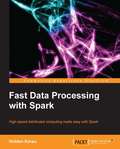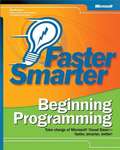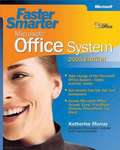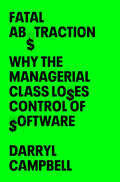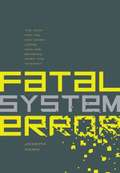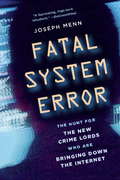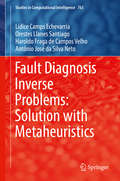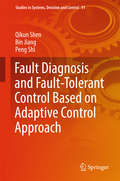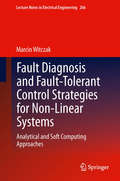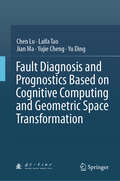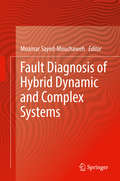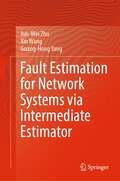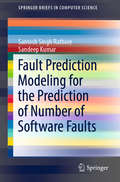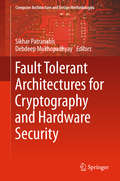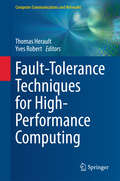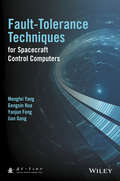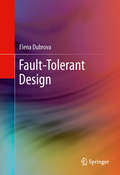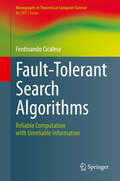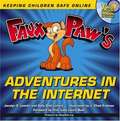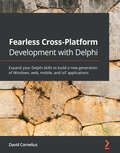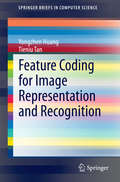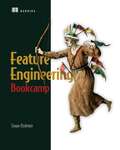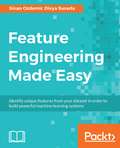- Table View
- List View
Fastdata Processing with Spark
by Holden KarauThis book will be a basic, step-by-step tutorial, which will help readers take advantage of all that Spark has to offer.Fastdata Processing with Spark is for software developers who want to learn how to write distributed programs with Spark. It will help developers who have had problems that were too much to be dealt with on a single computer. No previous experience with distributed programming is necessary. This book assumes knowledge of either Java, Scala, or Python.
Faster Smarter Beginning Programming
by Jim BuyensNow you can write your own programs with Microsoft® Visual Basic® .NET--faster, smarter, and better. Dive in--this friendly, high-energy guide makes it easy to learn exactly what you need. Use the numbered steps, code listings, and expert tips to accelerate your programming productivity--and move on to doing the cool things you want to do! Learn basic concepts, syntax, and language elements Follow easy coding techniques to build your dexterity Write and run your first Visual Basic .NET program Use built-in functions and classes or create your own Design the user interface with Windows® Forms Program Web applications using Microsoft ASP.NET Access files and databases Debug and deploy your new programs
Faster Smarter Microsoft® Office System -- 2003 Edition
by Katherine MurrayNow you can do the things you do every day with Office--create reports, manage finances, send e-mail, and make a presentation--but do them faster, smarter, and better. Dive in! This friendly, focused guide shows the best ways to use the core features in your Office programs, so you spend more time doing and less time learning. Use the quick lists, numbered steps, and helpful examples to accelerate your productivity--and do the cool things you want to do! Discover how to: Get your e-mail, calendar, and work day under control Create professional-looking documents--from memos and invoices to complex reports Use spreadsheets and charts to analyze data and support decision making Produce and deliver a compelling presentation with great visuals and special effects Communicate and work together more effectively using enhanced collaboration features Quickly build a dynamic Web site with data-driven features Use XML to make your data go farther Share and reuse information among programs to simplify work and get better resultsLearn about Office the Faster Smarter way! 10-Second Summary--see what each chapter covers at a glance Fast Wrap-Up--review key points and takeaways from every chapter Real-World Examples--apply what you learn to real work, right now Aha! Tips--get insider tips and insights to fuel your productivity Top 10 Troubleshooting Solutions--find fast answers, right inside the cover!
Fatal Abstraction: Why the Managerial Class Loses Control of Software
by Darryl CampbellA tech insider explains how capitalism and software development make for such a dangerous mix. Software was supposed to radically improve society. Outdated mechanical systems would be easily replaced; programs like PowerPoint would make information flow more freely; social media platforms like Facebook would bring people together; and generative AI would solve the world’s greatest ills. Yet in practice, few of the systems we looked to with such high hopes have lived up to their fundamental mandate. In fact, in too many cases they’ve made things worse, exposing us to immense risk at the societal and the individual levels. How did we get to this point? In Fatal Abstraction, Darryl Campbell shows that the problem is “managerial software”: programs created and overseen not by engineers but by professional managers with only the most superficial knowledge of technology itself. The managerial ethos dominates the modern tech industry, from its globe-spanning giants all the way down to its trendy startups. It demands that corporate leaders should be specialists in business rather than experts in their company’s field; that they manage their companies exclusively through the abstractions of finance; and that profit margins must take priority over developing a quality product that is safe for the consumer and beneficial for society. These corporations rush the development process and package cheap, unproven, potentially dangerous software inside sleek and shiny new devices. As Campbell demonstrates, the problem with software is distinct from that of other consumer products, because of how quickly it can scale to the dimensions of the world itself, and because its inner workings resist the efforts of many professional managers to understand it with their limited technical background. A former tech worker himself, Campbell shows how managerial software fails, and when it does what sorts of disastrous consequences ensue, from the Boeing 737 MAX crashes to a deadly self-driving car to PowerPoint propaganda, and beyond. Yet just because the tech industry is currently breaking its core promise does not mean the industry cannot change, or that the risks posed by managerial software should necessarily persist into the future. Campbell argues that the solution is tech workers with actual expertise establishing industry-wide principles of ethics and safety that corporations would be forced to follow. Fatal Abstraction is a stirring rebuke of the tech industry’s current managerial excesses, and also a hopeful glimpse of what a world shaped by good software can offer.
Fatal System Error
by Joseph MennIn 2004, a California computer whiz named Barrett Lyon uncovered the identity of a hacker running major assaults on business websites. Without fully grasping the repercussions, he set on an investigation that led him into the heart of the Russian mob. Cybercrime was evolving. No longer the domain of small-time thieves, it had been discovered by sophisticated gangs. They began by attacking corporate websites but increasingly stole financial data from consumers and defense secrets from governments. While Barrett investigated the cutting edge of technology crime, the U. S. government struggled to catch up. Britain, however, was a different story. In the late 1990s, the Queen herself had declared safe e-commerce a national security priority. Agents from the London-based National Hi-Tech Crime Unit sought out Barrett and enlisted his help. They also sent detective Andrew Crocker, a Welsh former boxer, to Russia to track down and prosecute the hackers--and to find out who they worked for. "Fatal System Error "penetrates both the Russian cyber-mob and the American mafia as the two fight over the Internet's massive spoils. It takes readers into the murky hacker underground, traveling the globe from San Francisco to Costa Rica, London, and Russia. Using unprecedented access to mob businesses and Russian officials, it shows how top criminals earned protection from the Russian government--and how Barrett Lyon and Andrew Crocker got closer to the titans of the underground economy than any previous outsider. Together, their stories explain why cybercrime is much worse than you thought--and why the Internet might not survive.
Fatal System Error: The Hunt for the New Crime Lords Who Are Bringing Down the Internet
by Joseph MennIn 2004, a California computer whiz named Barrett Lyon uncovered the identity of a hacker running major assaults on business websites. Without fully grasping the repercussions, he set on an investigation that led him into the heart of the Russian mob. Cybercrime was evolving. No longer the domain of small-time thieves, it had been discovered by sophisticated gangs. They began by attacking corporate websites but increasingly stole financial data from consumers and defense secrets from governments. While Barrett investigated the cutting edge of technology crime, the U.S. government struggled to catch up. Britain, however, was a different story. In the late 1990s, the Queen herself had declared safe e-commerce a national security priority. Agents from the London-based National Hi-Tech Crime Unit sought out Barrett and enlisted his help. They also sent detective Andrew Crocker, a Welsh former boxer, to Russia to track down and prosecute the hackers--and to find out who they worked for. Fatal System Error penetrates both the Russian cyber-mob and the American mafia as the two fight over the Internet's massive spoils. It takes readers into the murky hacker underground, traveling the globe from San Francisco to Costa Rica, London, and Russia. Using unprecedented access to mob businesses and Russian officials, it shows how top criminals earned protection from the Russian government--and how Barrett Lyon and Andrew Crocker got closer to the titans of the underground economy than any previous outsider. Together, their stories explain why cybercrime is much worse than you thought--and why the Internet might not survive.
Father, Son, and Company: My Life at IBM and Beyond
by Thomas J. Watson Jr. Peter PetreAlong with the story of a father and son, this is IBM's story too. It chronicles the management insights that shaped its course and its unique corporate culture, the style that made Thomas Watson Sr. one of America's most charismatic bosses, and the daring decisions by Thomas Watson Jr. that transformed IBM into the world's largest computing company. One of the greatest business-success stories of all time, "Father, Son & Co." is a moving lesson for fathers who dream for their children, as well as a testament to American ingenuity and values, told in a disarmingly frank and eloquent voice.
Fault Diagnosis Inverse Problems: Solution with Metaheuristics (Studies in Computational Intelligence #763)
by Orestes Llanes Santiago Lídice Camps Echevarría Haroldo Fraga Campos Velho Antônio José Silva NetoThis book presents a methodology based on inverse problems for use in solutions for fault diagnosis in control systems, combining tools from mathematics, physics, computational and mathematical modeling, optimization and computational intelligence. This methodology, known as fault diagnosis – inverse problem methodology or FD-IPM, unifies the results of several years of work of the authors in the fields of fault detection and isolation (FDI), inverse problems and optimization. The book clearly and systematically presents the main ideas, concepts and results obtained in recent years. By formulating fault diagnosis as an inverse problem, and by solving it using metaheuristics, the authors offer researchers and students a fresh, interdisciplinary perspective for problem solving in these fields. Graduate courses in engineering, applied mathematics and computing also benefit from this work.
Fault Diagnosis and Fault-Tolerant Control Based on Adaptive Control Approach
by Peng Shi Bin Jiang Qikun ShenThis book provides recent theoretical developments in and practical applications of fault diagnosis and fault tolerant control for complex dynamical systems, including uncertain systems, linear and nonlinear systems. Combining adaptive control technique with other control methodologies, it investigates the problems of fault diagnosis and fault tolerant control for uncertain dynamic systems with or without time delay. As such, the book provides readers a solid understanding of fault diagnosis and fault tolerant control based on adaptive control technology. Given its depth and breadth, it is well suited for undergraduate and graduate courses on linear system theory, nonlinear system theory, fault diagnosis and fault tolerant control techniques. Further, it can be used as a reference source for academic research on fault diagnosis and fault tolerant control, and for postgraduates in the field of control theory and engineering.
Fault Diagnosis and Fault-Tolerant Control Strategies for Non-Linear Systems
by Marcin WitczakThis book presents selected fault diagnosis and fault-tolerant control strategies for non-linear systems in a unified framework. In particular, starting from advanced state estimation strategies up to modern soft computing, the discrete-time description of the system is employed Part I of the book presents original research results regarding state estimation and neural networks for robust fault diagnosis. Part II is devoted to the presentation of integrated fault diagnosis and fault-tolerant systems. It starts with a general fault-tolerant control framework, which is then extended by introducing robustness with respect to various uncertainties. Finally, it is shown how to implement the proposed framework for fuzzy systems described by the well-known Takagi-Sugeno models. This research monograph is intended for researchers, engineers, and advanced postgraduate students in control and electrical engineering, computer science, as well as mechanical and chemical engineering.
Fault Diagnosis and Prognostics Based on Cognitive Computing and Geometric Space Transformation
by Jian Ma Yu Ding Chen Lu Laifa Tao Yujie ChengThis monograph introduces readers to new theories and methods applying cognitive computing and geometric space transformation to the field of fault diagnosis and prognostics. It summarizes the basic concepts and technical aspects of fault diagnosis and prognostics technology. Existing bottleneck problems are examined, and the advantages of applying cognitive computing and geometric space transformation are explained. In turn, the book highlights fault diagnosis, prognostic, and health assessment technologies based on cognitive computing methods, including deep learning, transfer learning, visual cognition, and compressed sensing. Lastly, it covers technologies based on differential geometry, space transformation, and pattern recognition.
Fault Diagnosis of Hybrid Dynamic and Complex Systems
by Moamar Sayed-MouchawehOnline fault diagnosis is crucial to ensure safe operation of complex dynamic systems in spite of faults affecting the system behaviors. Consequences of the occurrence of faults can be severe and result in human casualties, environmentally harmful emissions, high repair costs, and economical losses caused by unexpected stops in production lines. The majority of real systems are hybrid dynamic systems (HDS). In HDS, the dynamical behaviors evolve continuously with time according to the discrete mode (configuration) in which the system is. Consequently, fault diagnosis approaches must take into account both discrete and continuous dynamics as well as the interactions between them in order to perform correct fault diagnosis. This book presents recent and advanced approaches and techniques that address the complex problem of fault diagnosis of hybrid dynamic and complex systems using different model-based and data-driven approaches in different application domains (inductor motors, chemical process formed by tanks, reactors and valves, ignition engine, sewer networks, mobile robots, planetary rover prototype etc.). These approaches cover the different aspects of performing single/multiple online/offline parametric/discrete abrupt/tear and wear fault diagnosis in incremental/non-incremental manner, using different modeling tools (hybrid automata, hybrid Petri nets, hybrid bond graphs, extended Kalman filter etc.) for different classes of hybrid dynamic and complex systems.
Fault Estimation for Network Systems via Intermediate Estimator
by Xin Wang Guang-Hong Yang Jun-Wei ZhuThis book is concerned with the fault estimation problem for network systems. Firstly, to improve the existing adaptive fault estimation observer, a novel so-called intermediate estimator is proposed to identify the actuator or sensor faults in dynamic control systems with high accuracy and convergence speed. On this basis, by exploiting the properties of network systems such as multi-agent systems and large-scale interconnected systems, this book introduces the concept of distributed intermediate estimator; faults in different nodes can be estimated simultaneously; meanwhile, satisfactory consensus performances can be obtained via compensation based protocols. Finally, the characteristics of the new fault estimation methodology are verified and discussed by a series of experimental results on networked multi-axis motion control systems. This book can be used as a reference book for researcher and designer in the field of fault diagnosis and fault-tolerant control and can also be used as a reference book for senior undergraduate and graduate students in colleges and universities.
Fault Prediction Modeling for the Prediction of Number of Software Faults (SpringerBriefs in Computer Science)
by Sandeep Kumar Santosh Singh RathoreThis book addresses software faults—a critical issue that not only reduces the quality of software, but also increases their development costs. Various models for predicting the fault-proneness of software systems have been proposed; however, most of them provide inadequate information, limiting their effectiveness. This book focuses on the prediction of number of faults in software modules, and provides readers with essential insights into the generalized architecture, different techniques, and state-of-the art literature. In addition, it covers various software fault datasets and issues that crop up when predicting number of faults. A must-read for readers seeking a “one-stop” source of information on software fault prediction and recent research trends, the book will especially benefit those interested in pursuing research in this area. At the same time, it will provide experienced researchers with a valuable summary of the latest developments.
Fault Tolerant Architectures for Cryptography and Hardware Security (Computer Architecture and Design Methodologies)
by Debdeep Mukhopadhyay Sikhar PatranabisThis book uses motivating examples and real-life attack scenarios to introduce readers to the general concept of fault attacks in cryptography. It offers insights into how the fault tolerance theories developed in the book can actually be implemented, with a particular focus on a wide spectrum of fault models and practical fault injection techniques, ranging from simple, low-cost techniques to high-end equipment-based methods. It then individually examines fault attack vulnerabilities in symmetric, asymmetric and authenticated encryption systems. This is followed by extensive coverage of countermeasure techniques and fault tolerant architectures that attempt to thwart such vulnerabilities. Lastly, it presents a case study of a comprehensive FPGA-based fault tolerant architecture for AES-128, which brings together of a number of the fault tolerance techniques presented. It concludes with a discussion on how fault tolerance can be combined with side channel security to achieve protection against implementation-based attacks. The text is supported by illustrative diagrams, algorithms, tables and diagrams presenting real-world experimental results.
Fault-Tolerance Techniques for High-Performance Computing
by Thomas Herault Yves RobertThis timely text presents a comprehensive overview of fault tolerance techniques for high-performance computing (HPC). The text opens with a detailed introduction to the concepts of checkpoint protocols and scheduling algorithms, prediction, replication, silent error detection and correction, together with some application-specific techniques such as ABFT. Emphasis is placed on analytical performance models. This is then followed by a review of general-purpose techniques, including several checkpoint and rollback recovery protocols. Relevant execution scenarios are also evaluated and compared through quantitative models. Features: provides a survey of resilience methods and performance models; examines the various sources for errors and faults in large-scale systems; reviews the spectrum of techniques that can be applied to design a fault-tolerant MPI; investigates different approaches to replication; discusses the challenge of energy consumption of fault-tolerance methods in extreme-scale systems.
Fault-Tolerance Techniques for Spacecraft Control Computers
by Mengfei Yang Gengxin Hua Yanjun Feng Jian GongComprehensive coverage of all aspects of space application oriented fault tolerance techniques • Experienced expert author working on fault tolerance for Chinese space program for almost three decades• Initiatively provides a systematic texts for the cutting-edge fault tolerance techniques in spacecraft control computer, with emphasis on practical engineering knowledge• Presents fundamental and advanced theories and technologies in a logical and easy-to-understand manner• Beneficial to readers inside and outside the area of space applications
Fault-Tolerant Design
by Elena DubrovaThis textbook serves as an introduction to fault-tolerance, intended for upper-division undergraduate students, graduate-level students and practicing engineers in need of an overview of the field. Readers will develop skills in modeling and evaluating fault-tolerant architectures in terms of reliability, availability and safety. They will gain a thorough understanding of fault tolerant computers, including both the theory of how to design and evaluate them and the practical knowledge of achieving fault-tolerance in electronic, communication and software systems. Coverage includes fault-tolerance techniques through hardware, software, information and time redundancy. The content is designed to be highly accessible, including numerous examples and exercises. Solutions and powerpoint slides are available for instructors.
Fault-Tolerant Search Algorithms
by Ferdinando CicaleseWhy a book on fault-tolerant search algorithms? Searching is one of the fundamental problems in computer science. Time and again algorithmic and combinatorial issues originally studied in the context of search find application in the most diverse areas of computer science and discrete mathematics. On the other hand, fault-tolerance is a necessary ingredient of computing. Due to their inherent complexity, information systems are naturally prone to errors, which may appear at any level - as imprecisions in the data, bugs in the software, or transient or permanent hardware failures. This book provides a concise, rigorous and up-to-date account of different approaches to fault-tolerance in the context of algorithmic search theory. Thanks to their basic structure, search problems offer insights into how fault-tolerant techniques may be applied in various scenarios. In the first part of the book, a paradigmatic model for fault-tolerant search is presented, the Ulam--Rényi problem. Following a didactic approach, the author takes the reader on a tour of Ulam--Rényi problem variants of increasing complexity. In the context of this basic model, fundamental combinatorial and algorithmic issues in the design of fault-tolerant search procedures are discussed. The algorithmic efficiency achievable is analyzed with respect to the statistical nature of the error sources, and the amount of information on which the search algorithm bases its decisions. In the second part of the book, more general models of faults and fault-tolerance are considered. Special attention is given to the application of fault-tolerant search procedures to specific problems in distributed computing, bioinformatics and computational learning. This book will be of special value to researchers from the areas of combinatorial search and fault-tolerant computation, but also to researchers in learning and coding theory, databases, and artificial intelligence. Only basic training in discrete mathematics is assumed. Parts of the book can be used as the basis for specialized graduate courses on combinatorial search, or as supporting material for a graduate or undergraduate course on error-correcting codes.
Faux Paw's Adventures In The Internet: Keeping Children Safe Online
by Laura Bush Jacalyn Leavitt Sally Linford J. Chad Erekson"I encourage all adults to teach children the basic principles of online safety that are found in this book. " --First Lady Laura Bush, from the Foreword <P><P> Wait 'til you hear what almost happened to me! The Internet is like a big city with great places to go, but you have to be careful! I know. I had a REAL adventure on the Internet, and it wasn't the fun kind. When I tell you what almost happened, you'll see why it's so important to follow the rules for online safety! Read this book and you'll find out what I'm talking about. Keep safe, okay? G2G (that's "got to go" online--but you knew that!) These "3 KEEPs" help me keep safe online I KEEP SAFE all my personal information I KEEP AWAY from online strangers I KEEP TELLING my parents or a trusted adult what I see on the Internet <P> A word to adults If there's a child in your life who uses the Internet, it's your job to help them keep safe from online predators. <P> Created for the Internet Keep Safe Coalition, Faux Paw--an adventurous, six-toed, Web-surfing cat--is here to help! With a foreword by First Lady Laura Bush, this colorful book and animated movie will give kids wise advice and you a place to start talking to them.
Fear, Hate, and Victimhood: How George Wallace Wrote the Donald Trump Playbook (Race, Rhetoric, and Media Series)
by Andrew E. StonerWhen Donald Trump announced his campaign for president in 2015, journalists, historians, and politicians alike attempted to compare his candidacy to that of Governor George Wallace. Like Trump, Wallace, who launched four presidential campaigns between 1964 and 1976, utilized rhetoric based in resentment, nationalism, and anger to sway and eventually captivate voters among America’s white majority. Though separated by almost half a century, the campaigns of both Wallace and Trump broke new grounds for political partisanship and divisiveness.In Fear, Hate, and Victimhood: How George Wallace Wrote the Donald Trump Playbook, author Andrew E. Stoner conducts a deep analysis of the two candidates, their campaigns, and their speeches and activities, as well as their coverage by the media, through the lens of demagogic rhetoric. Though past work on Wallace argues conventional politics overcame the candidate, Stoner makes the case that Wallace may in fact be a prelude to the more successful Trump campaign.Stoner considers how ideas about “in-group” and “out-group” mentalities operate in politics, how anti-establishment views permeate much of the rhetoric in question, and how expressions of victimhood often paradoxically characterize the language of a leader praised for “telling it like it is.” He also examines the role of political spectacle in each candidate’s campaigns, exploring how media struggles to respond to—let alone document—demagogic rhetoric.Ultimately, the author suggests that the Trump presidency can be understood as an actualized version of the Wallace presidency that never was. Though vast differences exist, the demagogic positioning of both men provides a framework to dissect these times—and perhaps a valuable warning about what is possible in our highly digitized information society.
Fearless Cross-Platform Development with Delphi: Expand your Delphi skills to build a new generation of Windows, web, mobile, and IoT applications
by David CorneliusLearn to rapidly build and deploy cross-platform applications from a single codebase with practical, real-world solutions using the mature Delphi 10.4 programming environmentKey FeaturesImplement Delphi's modern features to build professional-grade Windows, web, mobile, and IoT applications and powerful serversBecome a Delphi code and project guru by learning best practices and techniques for cross-platform developmentDeploy your complete end-to-end application suite anywhereBook DescriptionDelphi is a strongly typed, event-driven programming language with a rich ecosystem of frameworks and support tools. It comes with an extensive set of web and database libraries for rapid application development on desktop, mobile, and internet-enabled devices. This book will help you keep up with the latest IDE features and provide a sound foundation of project management and recent language enhancements to take your productivity to the next level.You'll discover how simple it is to support popular mobile device features such as sensors, cameras, and GPS. The book will help you feel comfortable working with FireMonkey and styles and incorporating 3D user interfaces in new ways. As you advance, you'll be able to build cross-platform solutions that not only look native but also take advantage of a wide array of device capabilities. You'll also learn how to use embedded databases, such as SQLite and InterBase ToGo, synchronizing them with your own custom backend servers or modules using the powerful RAD Server engine. The book concludes by sharing tips for testing and deploying your end-to-end application suite for a smooth user experience.By the end of this book, you'll be able to deliver modern enterprise applications using Delphi confidently.What you will learnDiscover the latest enhancements in the Delphi IDEOvercome the barriers that hold you back from embracing cross-platform developmentBecome fluent with FireMonkey controls, styles, LiveBindings, and 3D objectsBuild Delphi packages to extend RAD Server or modularize your applicationsUse FireDAC to get quick and direct access to any dataLeverage IoT technologies such as Bluetooth and Beacons and learn how to put your app on a Raspberry PiEnable remote apps with backend servers on Windows and Linux through REST APIsDevelop modules for IIS and Apache web serversWho this book is forThis book is for Delphi developers interested in expanding their skillset beyond Windows programming by creating professional-grade applications on multiple platforms, including Windows, Mac, iOS, Android, and back-office servers. You'll also find this book useful if you're a developer looking to upgrade your knowledge of Delphi to keep up with the latest changes and enhancements in this powerful toolset. Some Delphi programming experience is necessary to make the most out of this book.
Feature Coding for Image Representation and Recognition
by Yongzhen Huang Tieniu TanThis brief presents a comprehensive introduction to feature coding, which serves as a key module for the typical object recognition pipeline. The text offers a rich blend of theory and practice while reflects the recent developments on feature coding, covering the following five aspects: (1) Review the state-of-the-art, analyzing the motivations and mathematical representations of various feature coding methods; (2) Explore how various feature coding algorithms evolve along years; (3) Summarize the main characteristics of typical feature coding algorithms and categorize them accordingly; (4) Discuss the applications of feature coding in different visual tasks, analyze the influence of some key factors in feature coding with intensive experimental studies; (5) Provide the suggestions of how to apply different feature coding methods and forecast the potential directions for future work on the topic. It is suitable for students, researchers, practitioners interested in object recognition.
Feature Engineering Bookcamp
by Sinan OzdemirDeliver huge improvements to your machine learning pipelines without spending hours fine-tuning parameters! This book&’s practical case-studies reveal feature engineering techniques that upgrade your data wrangling—and your ML results.In Feature Engineering Bookcamp you will learn how to: Identify and implement feature transformations for your data Build powerful machine learning pipelines with unstructured data like text and images Quantify and minimize bias in machine learning pipelines at the data level Use feature stores to build real-time feature engineering pipelines Enhance existing machine learning pipelines by manipulating the input data Use state-of-the-art deep learning models to extract hidden patterns in data Feature Engineering Bookcamp guides you through a collection of projects that give you hands-on practice with core feature engineering techniques. You&’ll work with feature engineering practices that speed up the time it takes to process data and deliver real improvements in your model&’s performance. This instantly-useful book skips the abstract mathematical theory and minutely-detailed formulas; instead you&’ll learn through interesting code-driven case studies, including tweet classification, COVID detection, recidivism prediction, stock price movement detection, and more. About the technology Get better output from machine learning pipelines by improving your training data! Use feature engineering, a machine learning technique for designing relevant input variables based on your existing data, to simplify training and enhance model performance. While fine-tuning hyperparameters or tweaking models may give you a minor performance bump, feature engineering delivers dramatic improvements by transforming your data pipeline. About the book Feature Engineering Bookcamp walks you through six hands-on projects where you&’ll learn to upgrade your training data using feature engineering. Each chapter explores a new code-driven case study, taken from real-world industries like finance and healthcare. You&’ll practice cleaning and transforming data, mitigating bias, and more. The book is full of performance-enhancing tips for all major ML subdomains—from natural language processing to time-series analysis. What's inside Identify and implement feature transformations Build machine learning pipelines with unstructured data Quantify and minimize bias in ML pipelines Use feature stores to build real-time feature engineering pipelines Enhance existing pipelines by manipulating input data About the reader For experienced machine learning engineers familiar with Python. About the author Sinan Ozdemir is the founder and CTO of Shiba, a former lecturer of Data Science at Johns Hopkins University, and the author of multiple textbooks on data science and machine learning. Table of Contents 1 Introduction to feature engineering 2 The basics of feature engineering 3 Healthcare: Diagnosing COVID-19 4 Bias and fairness: Modeling recidivism 5 Natural language processing: Classifying social media sentiment 6 Computer vision: Object recognition 7 Time series analysis: Day trading with machine learning 8 Feature stores 9 Putting it all together
Feature Engineering Made Easy: Identify unique features from your dataset in order to build powerful machine learning systems
by Michael Smith Sinan Ozdemir Divya SusarlaA perfect guide to speed up the predicting power of machine learning algorithms Key Features Design, discover, and create dynamic, efficient features for your machine learning application Understand your data in-depth and derive astonishing data insights with the help of this Guide Grasp powerful feature-engineering techniques and build machine learning systems Book Description Feature engineering is the most important step in creating powerful machine learning systems. This book will take you through the entire feature-engineering journey to make your machine learning much more systematic and effective. You will start with understanding your data—often the success of your ML models depends on how you leverage different feature types, such as continuous, categorical, and more, You will learn when to include a feature, when to omit it, and why, all by understanding error analysis and the acceptability of your models. You will learn to convert a problem statement into useful new features. You will learn to deliver features driven by business needs as well as mathematical insights. You'll also learn how to use machine learning on your machines, automatically learning amazing features for your data. By the end of the book, you will become proficient in Feature Selection, Feature Learning, and Feature Optimization. What you will learn Identify and leverage different feature types Clean features in data to improve predictive power Understand why and how to perform feature selection, and model error analysis Leverage domain knowledge to construct new features Deliver features based on mathematical insights Use machine-learning algorithms to construct features Master feature engineering and optimization Harness feature engineering for real world applications through a structured case study Who this book is for If you are a data science professional or a machine learning engineer looking to strengthen your predictive analytics model, then this book is a perfect guide for you. Some basic understanding of the machine learning concepts and Python scripting would be enough to get started with this book.
